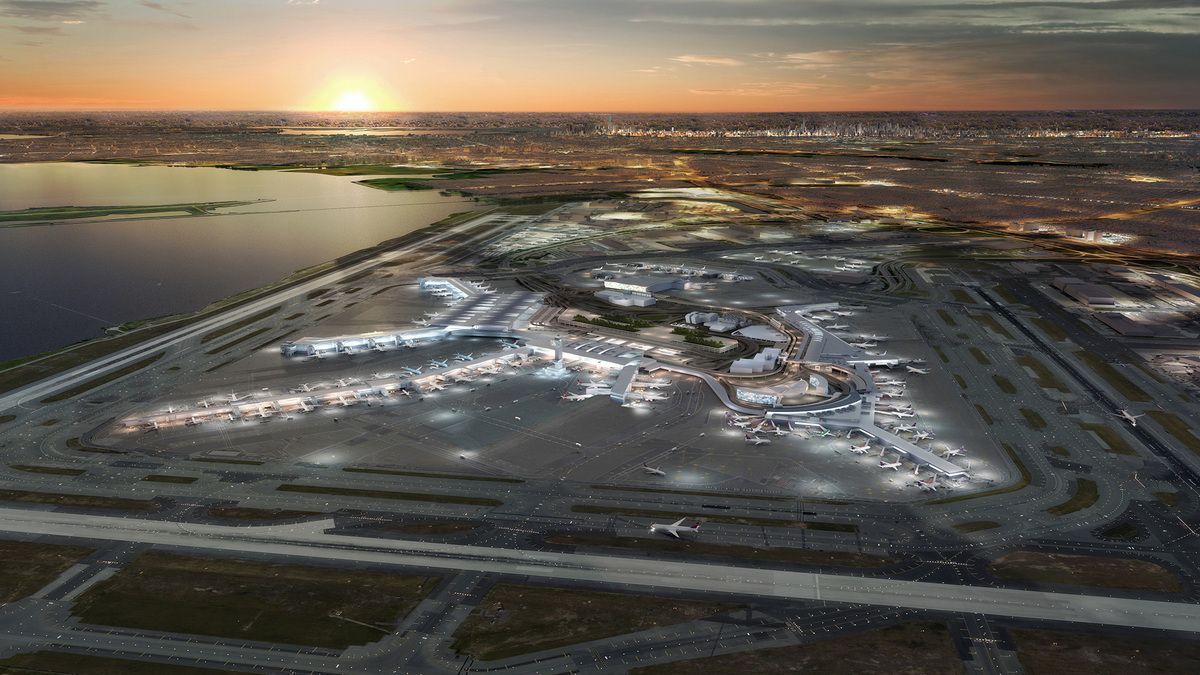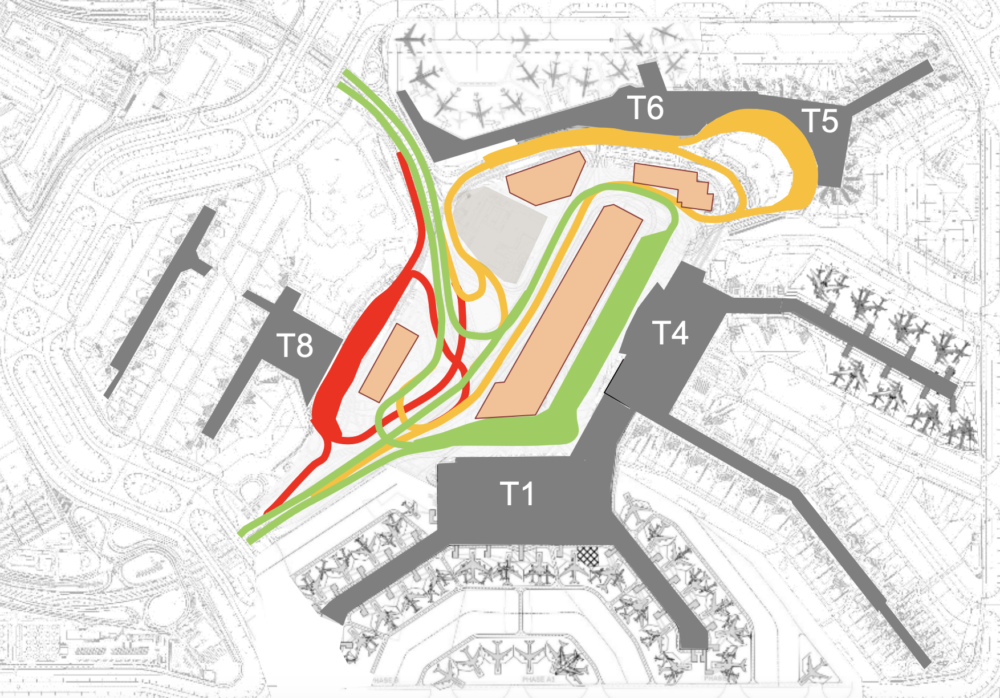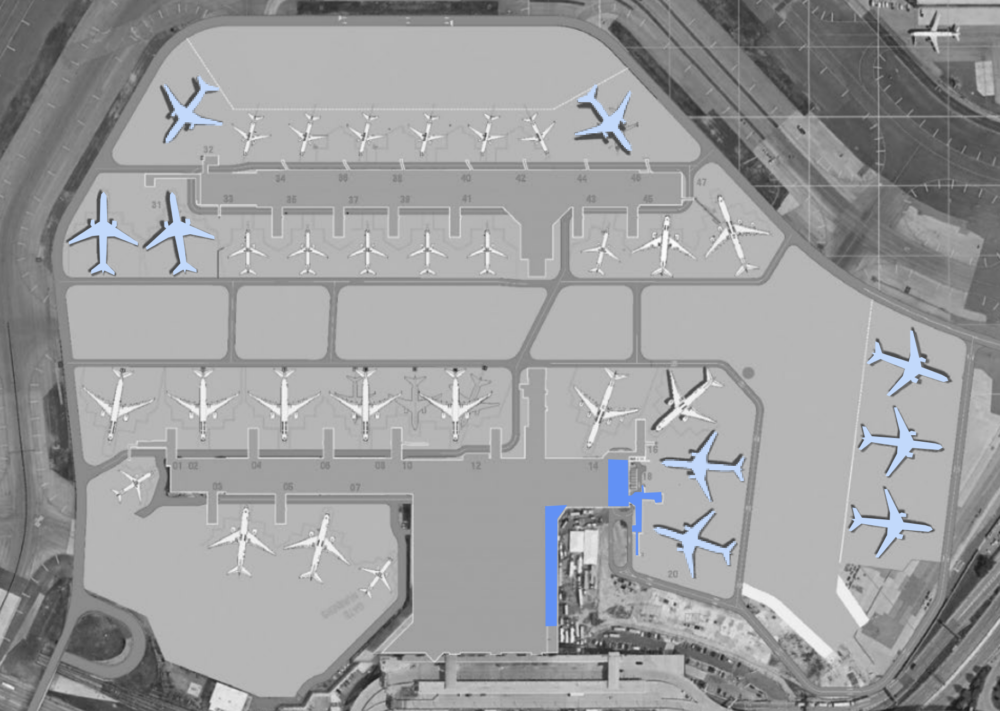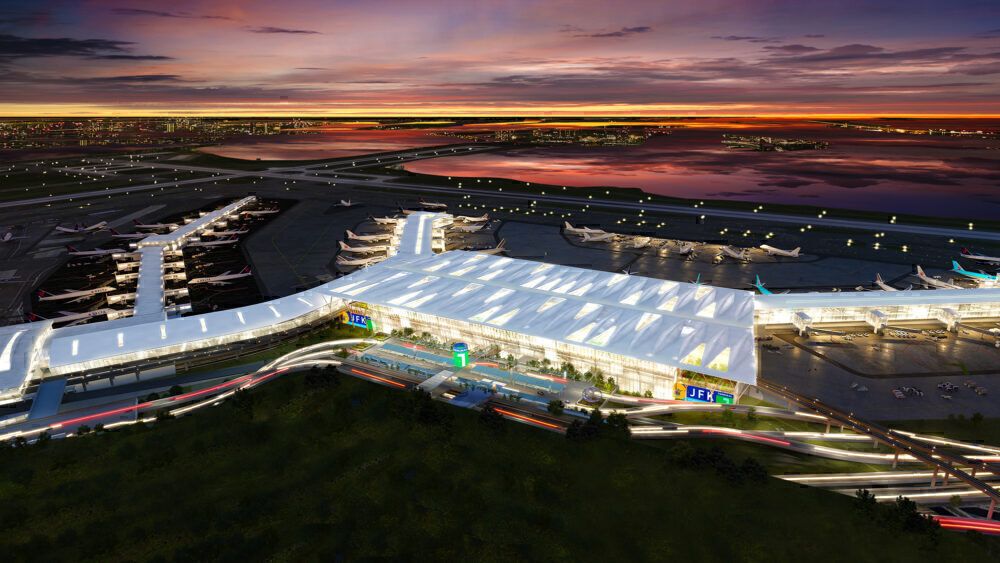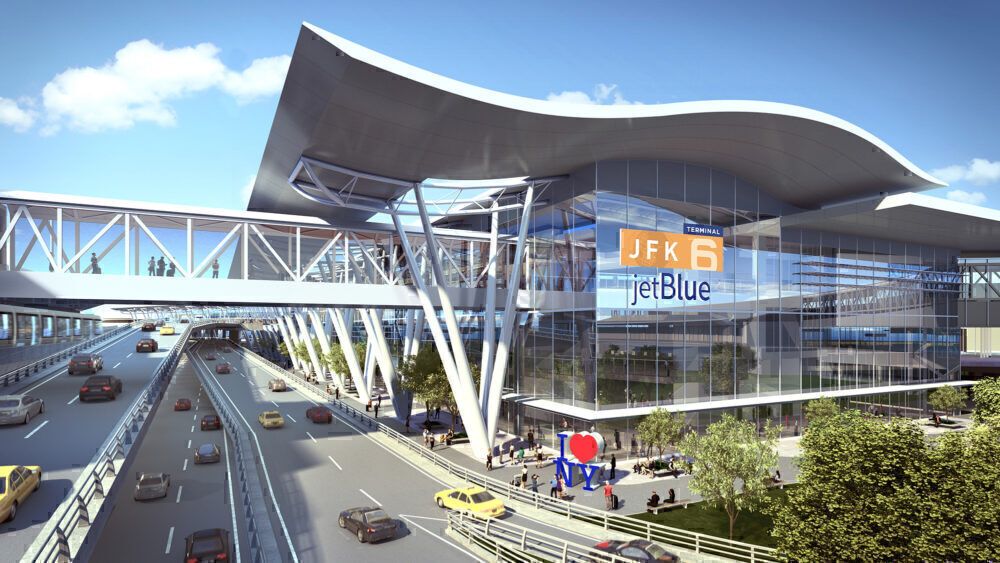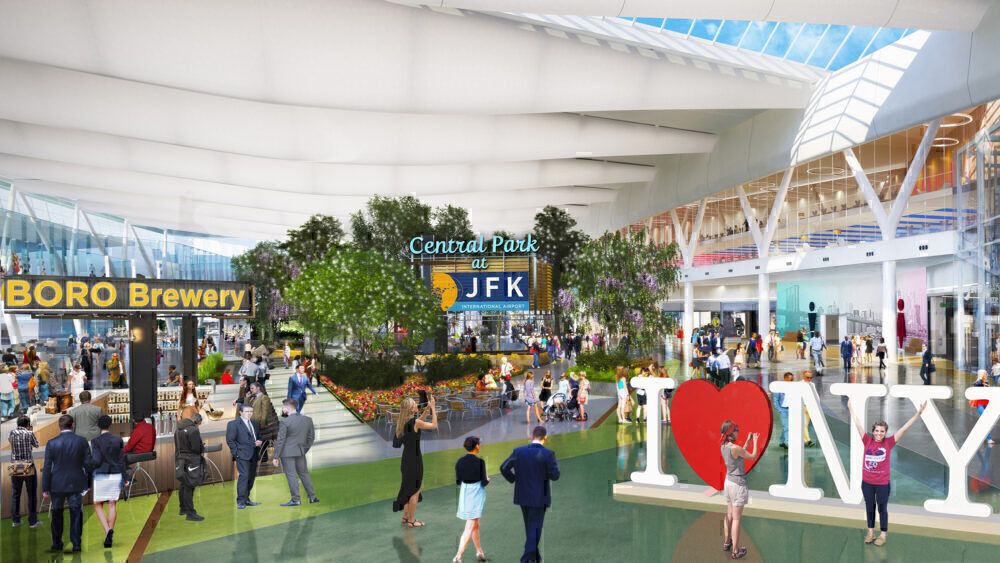New York's John F. Kennedy International Airport (JFK) is undergoing a redevelopment. The main international gateway to the most populated metro area in the United States, JFK, is aging and was in dire need of redevelopment in order to cater to the growing number of travelers to and from the city. So, from 2017, the state of New York and the Port Authority of New York and New Jersey began working on a plan to redevelop JFK.
The issues with JFK now
Anyone who has been to JFK knows the airport has issues. Plenty of gate areas are restricted, and cul-de-sacs in T1, T2, and T7 force pushback onto taxiways, which is inefficient and lengthens the buffer time between flights on gates. Out front, JFK has a confusing network of roads with limited capacity that can get congested easily.
The overcrowding continues inside, as the buildings are aging and were designed when fewer people were going through them. There are also complicated journeys between terminals, all of which combine for a hectic travel experience.
So, the redevelopment plan began. The goal was to expand the airport's capacity to hit about 60 million annual passengers, improve the customer experience, ensure a safer airport, and make it less congested and increase its efficiency.
The new terminal layout
JFK has six terminals: T1, T2, T4, T5, T7, and T8. Each of these has its own pros and cons but combined, they are woefully outdated and inefficient. Moving forward, with the airport redevelopment, JFK plans to move to five terminals: T1, T4, T5, T6, and T8. These enlarged and simplified terminals will then offer fewer loops and confusions in terms of roadways and also increase the efficiency of vehicles heading to certain parts of the airport.
One of the goals of the new terminal layout is to have it work with the existing JFK airside system and also allow for seamless connectivity with a higher capacity AirTrain network.
The new Terminal 8
In the new Terminal 8, American Airlines will colocate with British Airways and are partnering on the project. The upwards of 14 daily flights to London on both carriers will depart from the same terminal, which will allow the two carriers to take advantage of consolidating premium check-in space, new joint lounges, and easier connections.
The new Terminal 8 is expected to be a oneworld hub. Along with AA and BA, Cathay Pacific, Finnair, Qatar Airways, Royal Jordanian, and others also operate to and from the terminal.
The new terminal will offer two new widebody gates, three new hardstands, and three gates that will be upgraded to be able to serve widebodies. This will help handle the increase in widebody traffic from British Airways and American Airlines.
The new Terminal 1
Terminal 1 is going to see one of the most notable redevelopment projects. The new T1 will be four times the size of the existing one, reaching 2.8 million square feet and housing 22 widebody gates, with one narrowbody gate.
The new T1 will take over the footprint of the existing T2, T2, and former T3, which is now filled with hardstands. There will still be some hardstands for parking aircraft that spend time on the ground.
The new Terminal 1 will serve mostly international carriers that already fly to the airport, such as Air China, Air France, Austrian Airlines, China Eastern, EVA Air, Korean Air, Lufthansa, Turkish Airlines, and others.
The new Terminal 6
T6 will replace the existing T7 and extend through T5, with seamless integration between T7 and T5. The streamlined layout will optimize the airside layout to allow for more efficient operations.
The new T6 will over 12 ADG V aircraft gates for domestic and international flights. This new terminal will go to JetBlue, which is a hub out of JFK.
Modernizing the experience
A lot of airports in the United States are built on older footprints, such as ones from the 1980s and 1990s. However, the traffic expansion in the 21st century has led these airports to reconsider and redevelop. Plenty of airports, ranging from JFK to Los Angeles (LAX), are investing billions and working with airline and industry partners to make the experience better.
The new focus is on integrating as much technology as possible to make airport security and check-in as efficient as possible. Terminal 4 is also undergoing a big refurbishment, but it will maintain much of the existing footprint.
JFK's redevelopment will still take about five years minimum. But, at the end of it, expect more seamless connections, more concession options, and likely a little less stressful travel experience.
Are you looking forward to the new JFK? Let us know in the comments!

